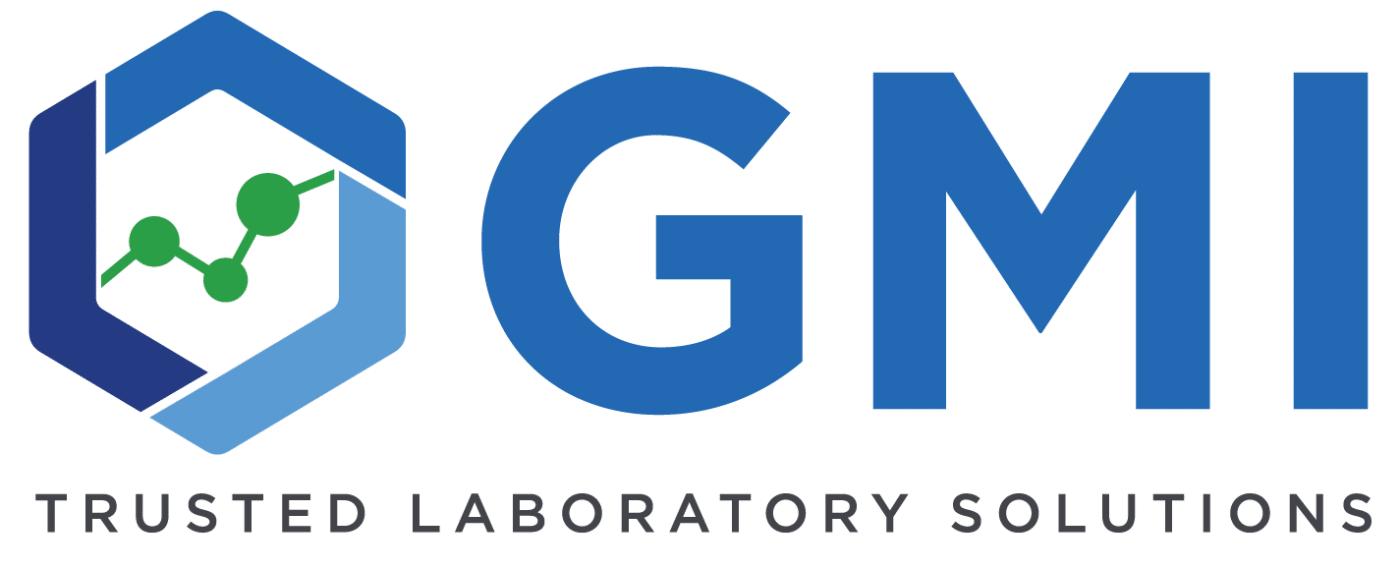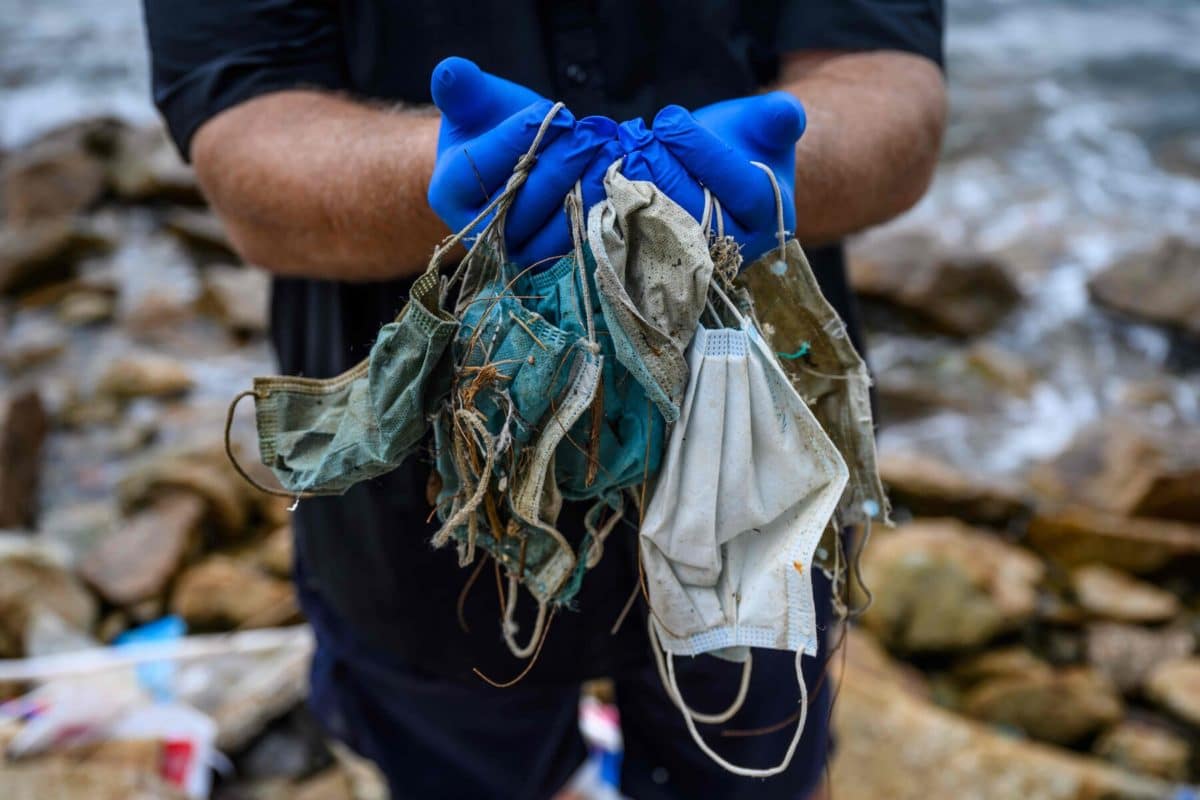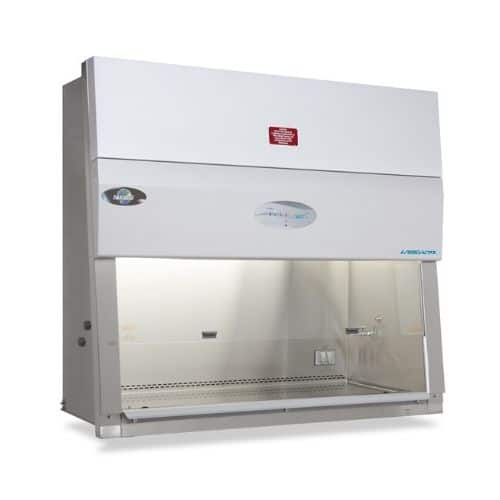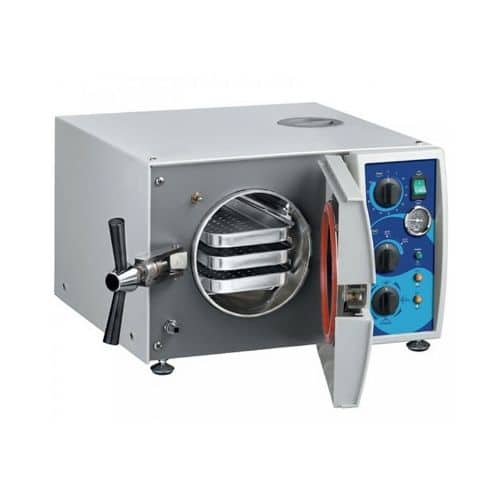No products in the cart.
Science News, PPE
Disposable Face Masks ‘Could Have a Devastating Effect On the Environment’
| June 11, 2020
- Coronavirus waste has become a new form of pollution as single-use personal protective equipment (PPE) floods our ocean.
- COVID-19 has had a number of unexpected impacts on the environment, curtailing recycling and increasing the use of plastic around the world.
- Governments need to act now to ensure a green recovery that incentivizes sustainability.
Between the end of February and mid-April this year more than a billion items of personal protective equipment were given out in the UK alone.
That’s millions of gloves and masks being used then thrown away every single day – just in UK healthcare settings. So it’s not difficult to see why conservationists around the world are sounding the alarm over where all these single-use products are ending up.
Waterlogged masks, gloves, hand sanitizer bottles and other coronavirus waste are already being found on our seabeds and washed up on our beaches, joining the day-to-day detritus in our ocean ecosystems.
GMI Safety & Infection Prevention Systems:
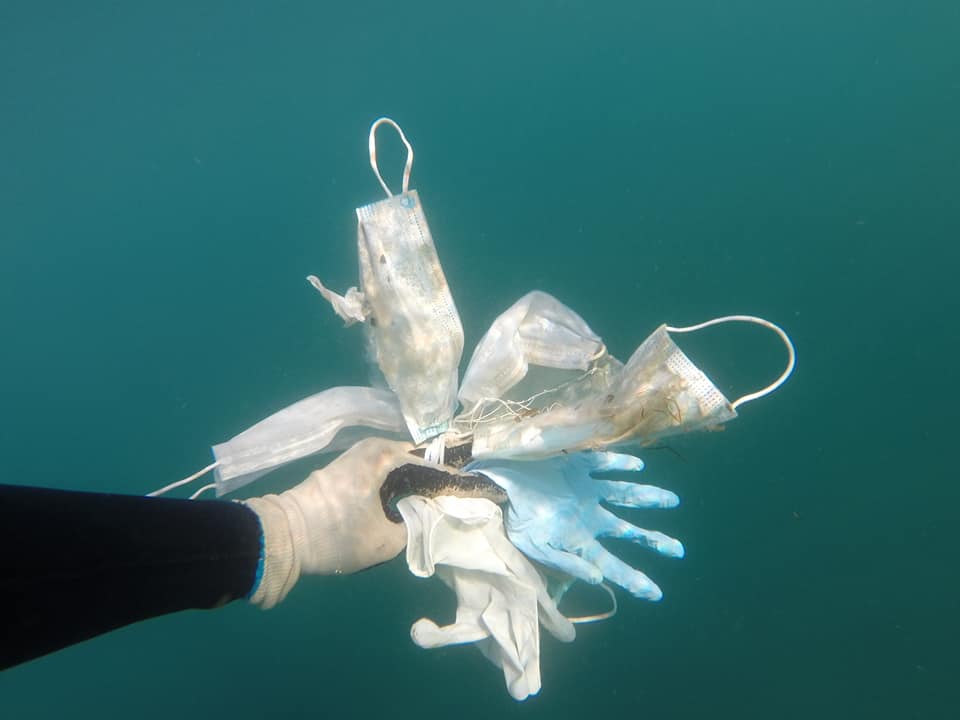
Along with photos and videos giving disturbing evidence of this new form of pollution, French clean-up charity Opération Mer Propre is among those calling for action. “There risks being more masks than jellyfish,” Laurent Lombard from the organization said in one Facebook post. It’s just as much of a problem on the other side of the world. Back in February, OceansAsia flagged the growing number of masks being discovered during its plastic pollution research. Masses of masks were found on the Soko Islands, a small cluster off the coast of Hong Kong.
Adding to the problem
Already, some 8 million tonnes of plastics enter our ocean every year, adding to the estimated 150 million tonnes already circulating in marine environments.
One study estimates that in the UK alone, if every person used a single-use face mask a day for a year, it would create an additional 66,000 tonnes of contaminated waste and 57,000 tonnes of plastic packaging.
World leaders and politicians are aware of the problem – and that it needs to be addressed.
“Maritime nations know far better than anyone how our ocean economies are dependent on ocean health,” said Zac Goldsmith, Minister, Department for Environment, Food and Rural Affairs in the UK in a recent World Economic Forum webinar about ensuring a green recovery.
“But we all ultimately depend on our shared oceans and changing the role that plastic plays in every part of our economy.
“Efforts to tackle plastic pollution can help us improve ocean health, tackle climate change, support biodiversity and build sustainable livelihoods.”
COVID-19’s cost to the environment
Single-use plastic waste is not the only impact COVID-19 is having on the environment.
Despite a temporary crash in carbon emissions as lockdowns have meant fewer people travelling and less industrial activity, there are concerns the pandemic will divert governments’ attention away from green issues.
The UN’s COP26 climate change conference, set to be held in November 2020, has already been postponed.
In some US cities, recycling programmes have been paused, while parts of virus-hit Italy and Spain also put a hold on recycling.
The quarantine economy has driven more people online, resulting in greater packaging waste from deliveries. Medical waste has rocketed.
The Solution? Reusable PAPRs.
Easier Breathing
A PAPR system uses a blower instead of lung power to draw air through the filter. This allows the user to breathe comfortably with less resistance, as the airflow is delivered directly into the headgear from the blower.
No Fit Test Required for Loose-Fitting Headgear
Loose-fitting headgear on PAPRs do not require a fit test, unlike tight-fitting disposable and reusable air-purifying respirator options. This can potentially save time and money because fit testing takes time and must be performed at least annually in the United States.
Options for Use with Limited Facial Hair
With any tight-fitting respirator, beards and other facial hair can be a problem, compromising the face seal. But PAPR systems with loose-fitting headgear are designed to accommodate limited facial hair. This can allow workers to keep their facial hair in certain circumstances.
Integrated Eye Protection
Integrated faceshields on certain headgear for PAPR systems can help protect the eyes and face. At the same time, some headgear models may offer a wider field of vision, which can help the wearers easily view their surroundings.
Eyeglasses also may be worn under many loose-fitting headgear models.
Integrated PPE from the Neck Up
Non-integrated PPE from multiple manufacturers are often not designed to work as a cohesive “system.” For example, you may wear a hard hat from Company A, eyewear made by Company B, respirator from Company C, and ear muffs sold by Company D. There are certain PAPR systems that include integrated hard hat protection, limited eye and face protection, and respiratory protection all incorporated into one system from the same manufacturer.
PAPR Systems Are Designed to Be Integrated and Work Together as a Single Unit
When using a PAPR approved by the National Institute for Occupational Safety and Health (NIOSH), the system is designed to work together as one integrated system. Further, certain PAPR systems may allow you to choose from a wide range of headgear, allowing for a customized PAPR solution that works for your environment.
For instance, certain PAPR blowers are compatible with both tight-fitting half-facepiece/full-facepiece respirators and loose-fitting headgear. In some instances, if you currently use a tight-fitting negative pressure respirator, a comparable PAPR system offering similar air-purifying filters/cartridges is also available. As with any respiratory protection product, proper care, cleaning, maintenance, and storage will help ensure optimal performance and durability. Of course, you need to make sure to read and follow the User Instructions for your particular PAPR model.
Certain work environments may require the use of electrical equipment that will prevent ignition in certain hazardous atmospheres. Electrical components of specific PAPR systems are available that meet certain intrinsic safety requirements. These systems provide respiratory protection while also helping to minimize the risk of ignition leading to a fire or explosion in hazardous environments.
High Levels of Protection
PAPRs configured with a loose-fitting facepiece offer an Assigned Protection Factor (APF) of 25. Respiratory hoods and helmets may have an APF up to 1,000; consult the manufacturer for details.
Protection for Professionals
PAPRs are useful and often necessary in many types of hazardous jobs and conditions—for instance, emergency workers such as first receivers who can help health care, military, and public health professionals during events such as natural disasters, mass casualties, or acts of terrorism.
PAPR systems also are available for first receiver, patient decontamination applications with specific systems approved to chemical, biological, radiological, and nuclear (CBRN) applications.
Before use, it is important to remember that the wearer must read and understand the User Instructions provided as a part of the product packaging. A written respiratory protection program also must be implemented that meets all of the requirements of 29 CFR 1910.134. To learn more about how to implement and manage a program, consult a Center for Respiratory Protection.3
